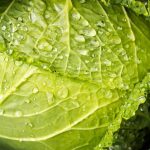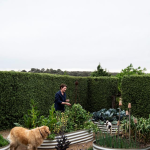As the long, cold winter days come to an end, it’s time to start thinking about spring vegetables gardening. There’s nothing quite like the joy of planting and harvesting your own fresh produce, and spring is the perfect time to get started. From peas to lettuce, and everything in between, there are so many delicious vegetables that thrive in the springtime.
Spring brings with it a sense of renewal and growth, making it the ideal season to embrace the rewards of vegetable gardening. Whether you’re a seasoned gardener or a beginner with a green thumb, there’s something truly special about watching your garden come to life as the weather warms up.
In this article, we will explore everything you need to know about starting a successful spring vegetable garden. From planning your garden and selecting the best vegetables to preparing the soil, planting, maintenance, harvesting, and even extending your growing season into early summer – we’ve got you covered. Get ready to roll up your sleeves and dig in as we dive into the world of spring vegetable gardening.
Planning Your Spring Vegetable Garden
Choosing the right location and ensuring the proper amount of sunlight are essential steps in planning your spring vegetables gardening. When selecting a location for your vegetable garden, it is important to find an area that receives at least 6-8 hours of direct sunlight per day.
This is crucial for the growth and development of most spring vegetables such as tomatoes, peppers, and cucumbers. Take note of any structures or trees that may create shade and adjust your garden layout accordingly.
In addition to sunlight, it is important to consider the overall layout and accessibility of your vegetable garden. Choosing a spot with well-draining soil can help prevent waterlogging and root rot in your plants. Accessibility is also key, as you’ll want to be able to easily access your garden for planting, watering, weeding, and harvesting. Consider creating paths or designated rows to make navigating your garden more efficient.
Once you have chosen the ideal location for your spring vegetable garden, take some time to plan out the layout of your garden beds or containers. Consider factors such as plant spacing, potential for vertical gardening (such as using trellises for climbing plants), and any potential obstacles such as neighboring structures or trees.
By carefully planning the layout of your garden, you can maximize the use of space and ensure that each plant gets the sunlight and nutrients it needs for healthy growth.
When planning where to place your spring vegetable garden, remember to consider both current and future conditions. As trees leaf out in spring or shading patterns change throughout different parts of the growing season, these factors could impact how much direct sunlight specific areas receive.
Paying attention to these details now will help ensure a successful growing season later on. With thoughtful planning and consideration of sunlight and location, you can set yourself up for a bountiful harvest from your spring vegetables gardening efforts.
Selecting the Best Spring Vegetables to Grow
When it comes to spring vegetables gardening, there is a wide variety of options to choose from. Selecting the best spring vegetables to grow can be an exciting and enjoyable process. Here are some popular spring vegetables to consider for your garden:
- Peas – Peas are a classic spring vegetable that thrive in cooler temperatures. They are easy to grow and can be planted as soon as the soil is workable.
- Lettuce – Lettuce is another great option for a spring vegetable garden. There are many varieties to choose from, including leaf lettuce, romaine, and butterhead lettuce.
- Radishes – Radishes are quick-growing and can be harvested in as little as three weeks. They add a peppery crunch to salads and are perfect for early spring planting.
- Spinach – Spinach is a nutrient-rich green that does well in the cool weather of early spring. It can be harvested as baby spinach or grown to full size for cooking and salads.
In addition to these options, other popular spring vegetables include carrots, kale, broccoli, and cauliflower. When selecting the best spring vegetables for your garden, consider your local climate, the amount of space you have available, and your own personal preferences.
It’s important to research each vegetable variety to ensure that it will thrive in your specific growing conditions. By carefully choosing the best spring vegetables for your garden, you can set yourself up for a successful and bountiful harvest later in the season.
Preparing Your Soil for Spring Planting
When it comes to spring vegetable gardening, one of the most crucial aspects to consider is soil preparation. Without healthy, nutrient-rich soil, your vegetables may not thrive as well as they could. This is why taking the time to properly prepare your soil for spring planting is essential for a successful vegetable garden.
Composting is an excellent way to improve the quality of your soil. By recycling organic material such as kitchen scraps, yard waste, and even cardboard, you can create a rich compost that will provide essential nutrients to your plants. Compost also helps improve soil structure and water retention, making it an all-around beneficial addition to your garden.
In addition to composting, fertilizing can further enhance the fertility of your soil. Different vegetables have different nutrient requirements, so it’s important to choose a fertilizer that meets the specific needs of the crops you plan on growing.
Organic fertilizers such as fish emulsion or bone meal are great options for feeding spring vegetables without introducing harmful chemicals into your garden. By supplementing your soil with both compost and fertilizer, you can ensure that your spring vegetables have everything they need to flourish.
| Soil Preparation Methods | Benefits |
|---|---|
| Composting | Improves soil structure and water retention; provides essential nutrients |
| Fertilizing | Meets specific nutrient requirements of different vegetables; enhances fertility of soil |
Planting Your Spring Vegetable Garden
Spring is the perfect time to start planting your favorite vegetables and enjoy a bountiful harvest later in the season. Whether you are a seasoned gardener or a beginner, there are several tips to keep in mind when planting your spring vegetables garden. From choosing the right plants to proper watering and mulching techniques, these tips will help ensure a successful and productive garden.
When planning your spring vegetable garden, it’s important to choose the right location that receives plenty of sunlight. Most vegetables need at least 6-8 hours of direct sunlight per day, so select a spot in your yard that meets this requirement. Consider using raised beds or containers if you have limited space or poor soil quality. Additionally, make sure to properly space out your plants to allow for adequate air circulation and prevent overcrowding.
Once you have chosen the location for your spring vegetable garden, it’s time to prepare the soil for planting. Start by removing any weeds and debris, then work compost or well-rotted manure into the soil to improve its quality. Proper soil preparation is essential for the success of your plants, as it provides necessary nutrients and promotes healthy root growth.
After preparing the soil, it’s time to start planting your spring vegetables. Consider using an organized approach such as companion planting, which involves pairing compatible plants together to maximize space and ward off pests. When watering your newly planted garden, be mindful of not overwatering as this can lead to root rot. Mulching around the base of your plants will help retain moisture, suppress weed growth, and regulate soil temperature.
By following these tips for planting, watering, and mulching your spring vegetable garden, you can set yourself up for a successful growing season filled with delicious produce. Remember to stay vigilant with maintenance tasks such as weeding and pest control to ensure a healthy crop throughout the spring months.
Spring Garden Maintenance
Understanding Common Garden Pests
One of the most important aspects of maintaining a successful spring vegetable garden is protecting it from pests. Common garden pests to look out for in the spring include aphids, slugs, snails, and caterpillars. These pests can cause significant damage to your vegetable plants if not managed properly. It’s important to familiarize yourself with these pests and their tell-tale signs so that you can take appropriate action when necessary.
Natural Pest Control Methods
When it comes to managing pests in your spring vegetable garden, many gardeners prefer to use natural methods rather than chemical pesticides. One effective method is to attract beneficial insects such as ladybugs, lacewings, and predatory beetles that feed on garden pests. Additionally, companion planting with pest-repelling plants like marigolds and basil can help deter unwanted insects. Another eco-friendly approach is using homemade insecticidal soap or neem oil spray to control common garden pests without harming beneficial insects.
Weed Management Techniques
Weeds are another challenge that spring vegetable gardeners must contend with. Weeds compete with your vegetables for water, nutrients, and sunlight, so it’s crucial to stay on top of weed management throughout the growing season. One effective strategy is mulching around your vegetable plants to suppress weed growth.
Hand-pulling weeds regularly is also essential, especially when they’re still young and easier to remove. For larger areas, consider using a hoe or cultivating tool to disrupt weed growth without disturbing your vegetable plant roots.
By implementing these proactive measures for pest and weed management in your spring vegetable garden, you’ll increase the likelihood of a bountiful harvest while minimizing the use of chemicals that can harm the environment and beneficial wildlife.
Harvesting and Enjoying Your Spring Vegetable Garden
Once your spring vegetables have reached maturity, it’s time to harvest and enjoy the fruits of your labor. Knowing the best times to harvest your vegetables is crucial for ensuring that they are at their peak flavor and freshness. Additionally, finding delicious recipes to try with your harvested produce can add a whole new level of enjoyment to your gardening experience.
Best Times to Harvest Spring Vegetables
Each spring vegetable has its own timeline for when it is ready to be harvested. For example, peas are best picked when the pods are plump and the peas inside are fully formed but still tender. Lettuce should be harvested when the leaves are young and tender, before they become bitter or start to bolt. Be sure to research each type of vegetable in your garden to determine the optimal time for harvesting.
Delicious Recipes to Try
Once you’ve harvested your spring vegetables, it’s time to put them to good use in the kitchen. From a refreshing pea and mint soup to a crisp and vibrant garden salad with freshly picked lettuce, there are endless possibilities for creating delicious dishes with your homegrown produce. Consider trying out new recipes such as roasted asparagus with parmesan cheese or sautéed sugar snap peas with garlic for a flavorful culinary experience.
Whether you’re enjoying a simple salad made from your freshly harvested lettuce or experimenting with more complex recipes featuring asparagus or snap peas, incorporating your own spring vegetables into meals can elevate them in both taste and nutritional value. Make the most out of your spring vegetable gardening by reaping the rewards of a bountiful harvest and savoring the flavors of homegrown produce in various culinary creations.
Extending Your Spring Vegetable Growing Season
As spring transitions into early summer, there are still plenty of opportunities to continue growing delicious and nutritious vegetables in your garden. By planting the right varieties and following some simple tips, you can extend your spring vegetable growing season and enjoy a continuous harvest throughout the warmer months.
One way to extend your spring vegetable growing season is by choosing vegetables that thrive in warmer temperatures. Some examples of vegetables that can be planted in late spring and early summer include tomatoes, peppers, cucumbers, zucchini, and green beans. These warm-season vegetables will continue to produce well into the summer if given the right conditions.
In addition to selecting the right vegetables, it’s important to pay attention to proper care and maintenance during this time. As temperatures rise, it’s crucial to ensure that your plants are receiving enough water without overwatering them. Mulching can also help retain soil moisture and regulate soil temperature, which is particularly helpful during hot summer days.
Lastly, consider using companion planting techniques to maximize space and yield in your garden as you transition from spring to summer crops. Some plants like lettuce or spinach may be harvested by the time your warm-season crops need more space to grow. This way, you make sure you have enough space for new plantings while efficiently using every available space in your garden.
| Vegetables for Late Spring | Tips for Extending Growing Season |
|---|---|
| Tomatoes | Select heat-resistant varieties |
| Peppers | Provide afternoon shade if necessary |
| Zucchini | Space out plantings for staggered harvests |
Conclusion
As the spring season comes to a close, it’s time to reflect on the rewards of all your hard work in your vegetable garden. From the joy of seeing seedlings sprout to the satisfaction of harvesting fresh produce, spring vegetables gardening has certainly been a fulfilling experience.
Whether you grew peas, lettuce, carrots, or any other spring vegetables, the process of tending to and nurturing your garden has likely brought you closer to nature and provided a sense of accomplishment.
Looking back on the successful growth of your spring vegetable garden, it’s important to also look forward to the next season. As summer approaches, there are opportunities to extend your gardening season by planting late spring and early summer crops for a continuous harvest.
This could include heat-tolerant vegetables like tomatoes, peppers, and cucumbers that thrive in warmer weather. By planning for the next season, you can continue to enjoy the rewards of gardening well into the coming months.
In conclusion, the act of tending to a spring vegetable garden is not only beneficial for producing fresh and healthy food but also offers many mental and emotional benefits. The tranquil moments spent in nature among growing plants can be deeply rewarding.
So as you wrap up this season’s gardening endeavors, take pride in what you’ve accomplished and look forward with anticipation to future plantings and harvests. Remember that with proper care and attention, your love for spring vegetables gardening will continue to bear fruit year after year.
Frequently Asked Questions
What Vegetables Should Be Planted in Spring?
In spring, it’s ideal to plant vegetables that can tolerate cooler temperatures such as peas, lettuce, spinach, carrots, radishes, and kale. These vegetables thrive in the milder weather and can be planted early in the season.
When Should I Start My Spring Garden?
The timing for starting a spring garden depends on your local climate. As a general rule of thumb, you can start planting your spring garden as soon as the ground thaws and is workable. This usually falls around March or April for many regions.
What Vegetables Can You Plant in May?
May is a great time to plant warm-season vegetables such as tomatoes, peppers, cucumbers, zucchini, and squash. These vegetables require warmer temperatures to thrive, so planting them in May ensures they will have optimal growing conditions for a bountiful harvest later in the season.

If you’re looking to get into vegetable gardening, or are just looking for some tips on how to make your current garden better, then you’ve come to the right place! My name is Ethel and I have been gardening for years. In this blog, I’m going to share with you some of my best tips on how to create a successful vegetable garden.





